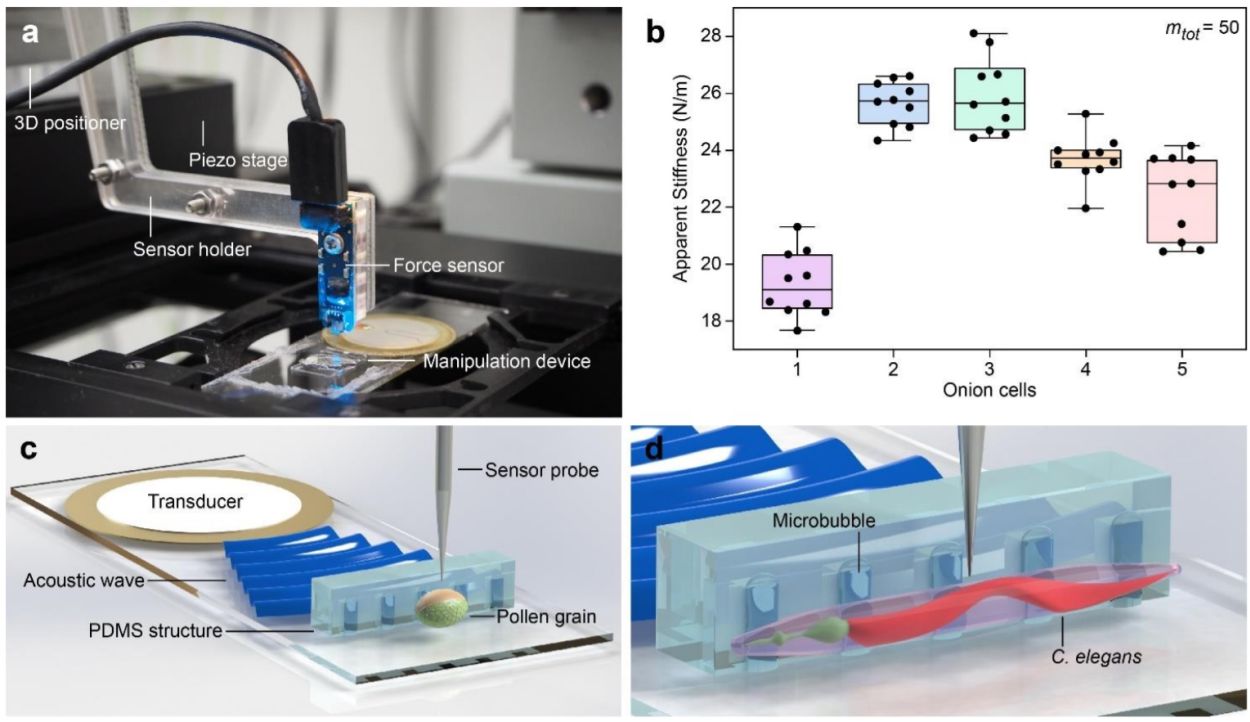
14 May 3D analysis of single cell and organisms using open-channel microfluidics
One of the most promising applications of microfluidics technology has been proven to be the single-cell analysis. Hardly a week goes by without a new microfluidic development for microfluidic single-cell analysis. Over the nearly past decade, the field has accelerated at a high rate and continued to facilitate single-cell analysis for genomics, transcriptomics, proteomics, etc. for researchers. A recent publication in Nature Communications reports a novel advancement for microfluidic single-cell analysis.
A Zurich-based research group is now employing a microfluidic chip with open microchannels combined with an acoustic manipulation technique for 3D mechanical characterization of single-cells and small organisms.
“Here, we combine an acoustically driven manipulation device with a micro-force sensor to freely rotate biological samples and quantify mechanical properties at multiple regions of interest within a specimen. The versatility of this tool is demonstrated through the analysis of single Lilium longiflorum pollen grains, in combination with numerical simulations, and individual Caenorhabditis elegans nematodes.”, the authors explained.

Reproduced under Creative Commons Attribution 4.0 International License. Läubli et al., Nat. Commun., 2021.
The open microfluidic device was made from PDMS using conventional microfluidic microfabrication methods. The open microchannel contained a linear array of rectangular microcavities which were used to trap microbubbles. The hydrophobic/hydrophilic interaction caused the locally confined microbubbles to stay trapped inside the microcavities during the experiment. The specimen was then introduced to the microchannel and positioned near the microbubbles. A piezo transducer placed near the microfluidic device excited the microbubbles resulting in the formation of microvortices near the microbubble and in the surrounding liquid as shown below. These microvortices exerted force on the specimen and resulted in rotation of the specimen.

Reproduced under Creative Commons Attribution 4.0 International License. Läubli et al., Nat. Commun., 2021.
The open microfluidic device was made from PDMS using conventional microfluidic microfabrication methods. The open microchannel contained a linear array of rectangular microcavities which were used to trap microbubbles. The hydrophobic/hydrophilic interaction caused the locally confined microbubbles to stay trapped inside the microcavities during the experiment. The specimen was then introduced to the microchannel and positioned near the microbubbles. A piezo transducer placed near the microfluidic device excited the microbubbles resulting in the formation of microvortices near the microbubble and in the surrounding liquid as shown below. These microvortices exerted force on the specimen and resulted in rotation of the specimen.
“Our results highlight the importance of manipulation capabilities during mechanical characterization to prevent misinterpretations or simplifications in modeling. Additionally, the applications could be expanded to the investigation of spheroids of transformed cells, with a view to quantifying mechanical alterations in cancer cells. Moreover, improvements in the imaging system will provide additional views (e.g., side views) during indentation that will dramatically simplify subsequent analyses”, the authors concluded.
Read the original article: 3D mechanical characterization of single cells and small organisms using acoustic manipulation and force microscopy

Pouriya Bayat
Pouriya is a microfluidic production engineer at uFluidix. He received his B.Sc. and M.A.Sc. both in Mechanical Engineering from Isfahan University of Technology and York University, respectively. During his master's studies, he had the chance to learn the foundations of microfluidic technology at ACUTE Lab where he focused on designing microfluidic platforms for cell washing and isolation. Upon graduation, he joined uFluidix to even further enjoy designing, manufacturing, and experimenting with microfluidic chips. In his free time, you might find him reading a psychology/philosophy/fantasy book while refilling his coffee every half an hour. Is there a must-read book in your mind, do not hesitate to hit him up with your to-read list.


